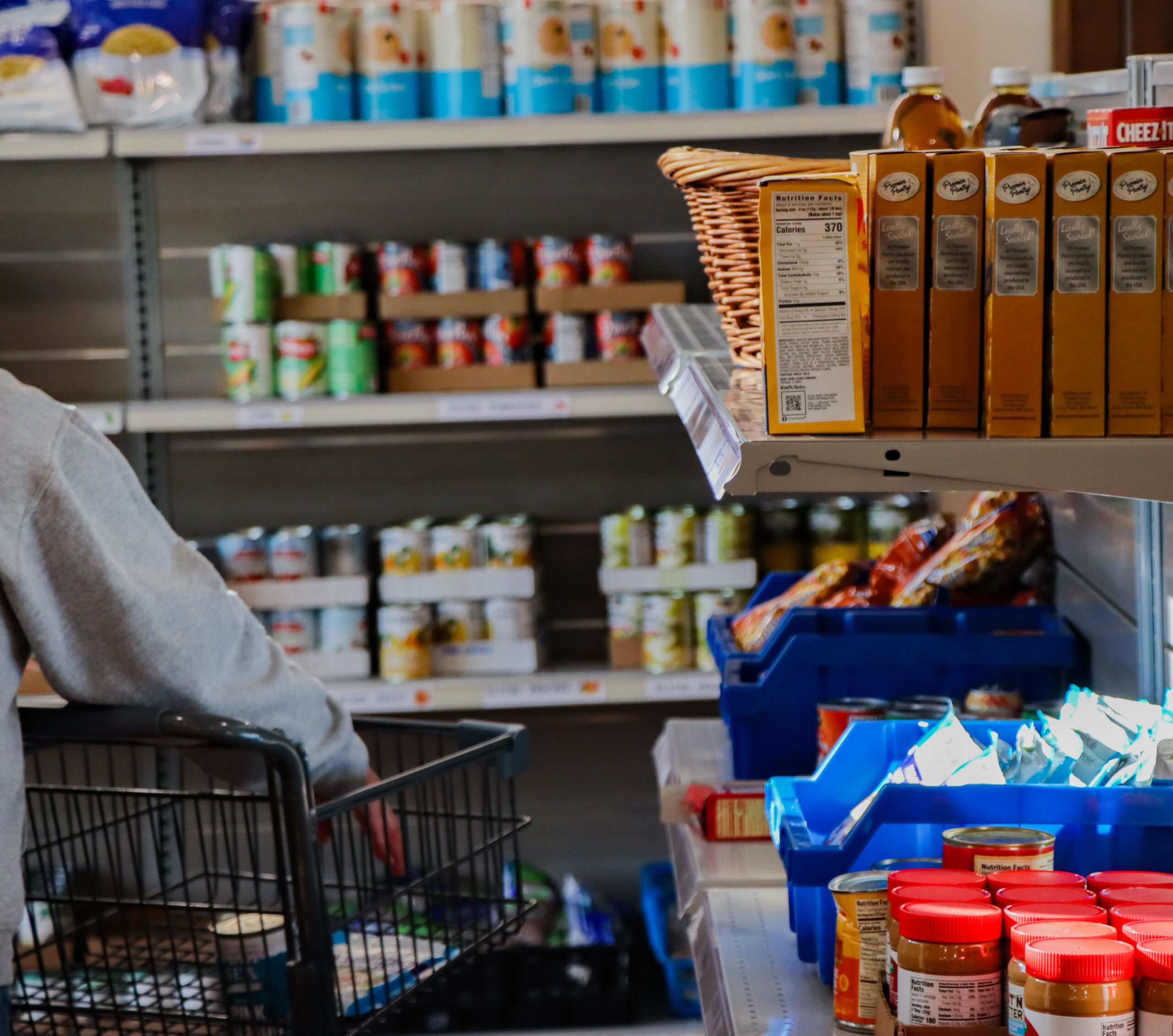
Mike Driscoll started using the Mission’s food pantry a few months ago. He receives social security income, but with things gradually becoming more expensive, he turned to the Mission’s pantry. While Mike has lived in Cherryfield his whole life, he had never been there before. He is not alone in people turning to this resource. On average, 60 new households come to the pantry each month. This is on top of roughly 350 households who use the pantry on a regular basis. Downeast Director Jenny Jones shares many of these new patrons have always been able to squeak by but are now finding themselves food insecure. And these new patrons cover a wide range of people, from young families to older, single people like Mike.
Your gift to the Maine Seacoast Mission makes you part of all we do.
Jenny shares many of these people have an income too high to qualify for programs like the Supplemental Nutrition Assistance Program (SNAP) or the Special Supplemental Nutrition Program for Women, Infants, and Children (WIC). Some also receive limited benefits from these programs, which may only cover a small portion of their grocery bill. With a 2.5% increase in the cost of food over the past year (according to the United States Department of Agriculture), this small change can result in people no longer being able to afford things they might have once been able to.
This is just one of the factors that drive people to utilize the pantry’s services. And the number of people needing help is not decreasing. It is not uncommon for a line to have formed outside the doors waiting for the pantry to open on Tuesday morning at 9:00 a.m. sharp. Food Pantry Coordinator Stacy Openshaw welcomes them in and has them sit at the tables in the cafe area. To make sure that the space never feels crowded, she has small groups of people shop at a time and asks others to wait until a person leaves. Some grab cups of coffee while they wait, and Stacy makes sure there are always fresh baked goods available.
Many of the small touches Stacy has put in place at the pantry are to help make newcomers feel comfortable. Because many of them have never used a pantry before, they often do not know what to expect when they come through the doors. Stacy makes everyone feel welcome, because often as they get to know her and open up more, she can direct them to additional resources.
Food Security staff has also noted an increase in the number of “transient” neighbors utilizing the pantries services. On average 27 households a month without a fixed address use the pantry. Often these are people staying with friends or family, and do not have a consistent place to go every day. If someone expresses a need, Stacy works to connect with them other local agencies including Downeast Community Partners, Healthy Acadia, and the Connection Initiative, if they need services the Mission does not offer.
For many, a safe, friendly face means all the difference. When a neighbor walks in through the doors, they know they can get what they need without worry, and the Mission is working hard to assure this will always be the case. “The Mission always welcomes monetary donations that allows us to purchase goods.” Jenny says. “Donations of food to the pantry make a huge difference too. Both types of donations allow for a variety of products many of which are hard to source with the current food system.”
Learn more about the Mission’s Food Security program and consider a donation to the Mission.
